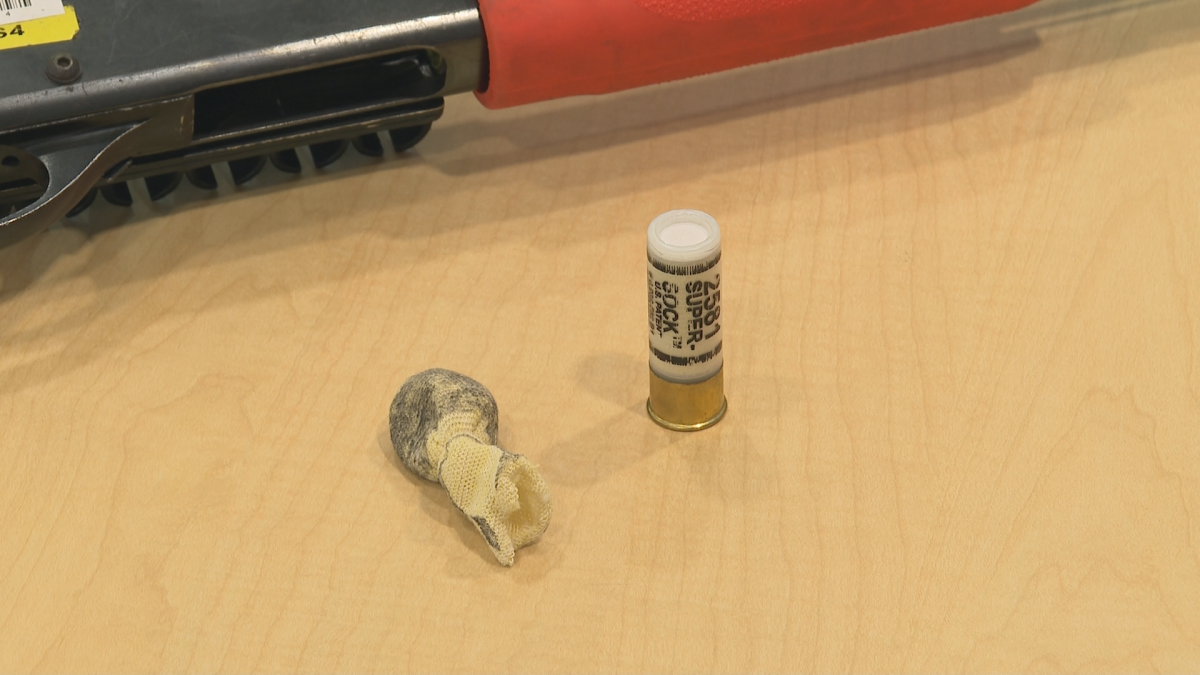At least four police officers with the Saint John Police Force are now armed with less-lethal beanbag guns.

The force has trained 16 officers to use the Remington Model 870 Pump Shotgun. It is one of the options police forces are arming themselves with to avoid lethal interactions on calls.
“It’s an easy weapon to function,” Saint John Police Force Chief Robert Bruce said. “All of our members have had training on it over the years. We now have 16 members that have been trained on this plus our ETS members, which is nine that have it. We have four shotguns that can be deployed on patrol, they’re all on patrol today.”
Inside, there are no actual bullets, but shell casings that contain a tiny beanbag. Officers are trained to hit the fatty, more muscular areas of the body, including the buttocks, upper and lower thigh, and calves.
Bruce said the police force has been contending with more and more mental health calls, which can sometimes mean meeting people in severe distress.
“It gives us time and distance,” Bruce said.
The SJPF also has a mobile crisis unit that attends calls with police – specifically those related to mental health – and he said the ultimate goal is to de-escalate without the need for any weapon.

Get breaking National news
“Every option that you can have to keep people safe,” Bruce said. “Nobody signs up for mental health issues. So, we’re trying to get people through this and it’s a horrible tragedy if somebody has to lose their life as we’re trying to save their life.”
Less-lethal weapons have been part of police toolkits for many years – namely stun guns, which shoot out probes that attach to the skin and send an electrical charge through the body.
But University of New Brunswick director of criminal justice studies Mary-Ann Campbell said stun guns can have limitations – including distance and accuracy, as well as issues with the probes not attaching properly for a number of reasons.
“This (the beanbag gun) gives officers a different option in the arsenal between a Taser and a weapon with a bullet,” she said. “It gives you options that would maintain that person’s life while responding appropriately to the seriousness of the situation.”
She said it is important for police forces to expand their toolkits. Less-lethal weapons have been recommendations of coroners’ inquests in New Brunswick, including most recently the inquest into the shooting death of Chantel Moore.
“I think most organizations these days are recognizing the more tools they have to respond to calls in the safe way possible for both the officer and for the member of the public they’re engaging with is best,” Campbell said.
Campbell said the expansion of less-lethal weapons doesn’t mean service handguns won’t be used. The National Use of Force Frame is complex and provides rationale for why a particular use of force might be applied in one case or another.
“Communication should continue throughout this whole cycle,” she said. “It really comes down to training and then oversight and feedback.”
The police force will collect data, according to Bruce, to determine how the current roster of guns is being used in the field, when they weren’t used but could have been and whether the force would like to expand the program.










Comments